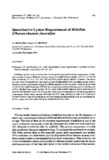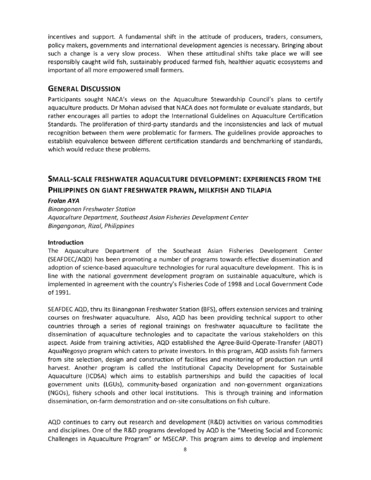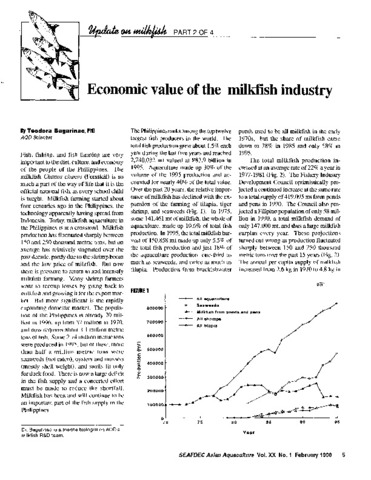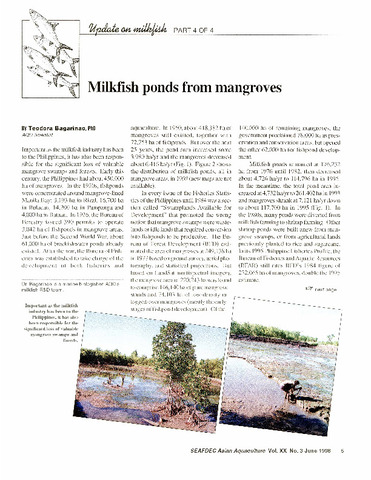Quantitative lysine requirement of milkfish (Chanos chanos) juveniles
Share
Abstract
A feeding experiment was conducted to determine the quantitative dietary requirement of milkfish juveniles for lysine. Milkfish (Chanoschanos Forsskal) of mean weight 5.92±0.14 g were fed diets containing 7.0, 11.0, 15.0, 19.0, 23.0 and 27.0 g lysine/kg dry diet for 12 weeks. The amino acid test diets contained white fish meal and zein supplemented with crystalline amino acids to provide an amino acid profile similar to milkfish proteins except for lysine. Each of the six diets was fed to four replicate groups of 25 fish in a completely randomized design and at a feeding rate of 5% of the fish body weight per day. On the basis of the growth response, lysinerequirement of juvenile milkfish was found to be 20 g/kg diet. This value corresponds to 4.0% when expressed as a percentage of the dietary protein. Survival (94–97%) was consistently high in all treatments. Except for loss of appetite resulting in low food intake and depressed growth, no nutritional deficiency signs were observed in fish given the lysine-deficient diets.
Suggested Citation
Borlongan, I. G., & Benitez, L. V. (1990). Quantitative lysine requirement of milkfish (Chanos chanos) juveniles. Aquaculture , 87(3-4), 341-347. https://doi.org/10.1016/0044-8486(90)90071-T
Subject
Taxonomic term
Collections
- AQD Journal Articles [1249]
Related items
Showing items related by title, author, creator and subject.
-
Small-scale freshwater aquaculture development: Experiences from the Philippines on giant freshwater prawn, milkfish and tilapia
Aya, Frolan (Japan International Cooperation Agency, 2013-12)The Aquaculture Department of the Southeast Asian Fisheries Development Center (SEAFDEC/AQD) has been promoting a number of programs towards effective dissemination and adoption of science-based aquaculture technologies ... -
Economic value of the milkfish industry
Bagarinao, Teodora (Aquaculture Department, Southeast Asian Fisheries Development Center, 1998)A brief description is given of the milkfish (Chanos chanos) farming industry in the Philippines. Over the past 20 years, the relative importance of milkfish has declined with the expansion of tilapia, tiger shrimp and ... -
Milkfish ponds from mangroves
Bagarinao, Teodora (Aquaculture Department, Southeast Asian Fisheries Development Center, 1998)




